Achieving the perfect harvest by understanding the correct watering practices will help you navigate the detrimental effects of over and underwatering.
Here’s a detailed guide that will help you explore the signs of overwatering and ensure that your plants receive the right amount of water for optimal growth.
So, let’s dive into the art of watering tomatoes and discover the ways to cultivate healthy and delicious tomatoes throughout the growing season.
Also, read: How Much Water Do Tomato Plants Need?
Also, read: How To Take Care Of A Tomato Plant? [Detailed Guide]
Signs Of Overwatering Tomato Plants
Table of Contents
Overwatering the tomatoes leads to various issues; therefore, it is essential to monitor the plant and soil at regular intervals to prevent overwatering.
The most common symptoms of overwatering are discussed below:
1. Yellowing Of Leaves
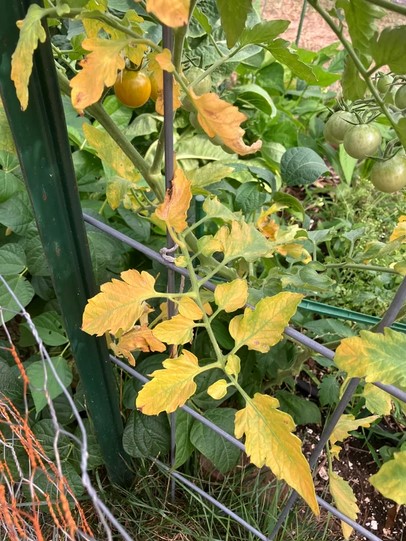
Yellowing leaves on tomato plants especially happen due to overwatering, and this is generally the first sign of overwatering. This is a clear indication that the plant is receiving an excess amount of water, as a result of which the plant fails to absorb the essential nutrients, thereby leading to the yellowing of leaves.
The leaves soon turn yellow and become soft or limp due to excess water and nutrient deficiency such as nitrogen.
2. Cracked Tomatoes
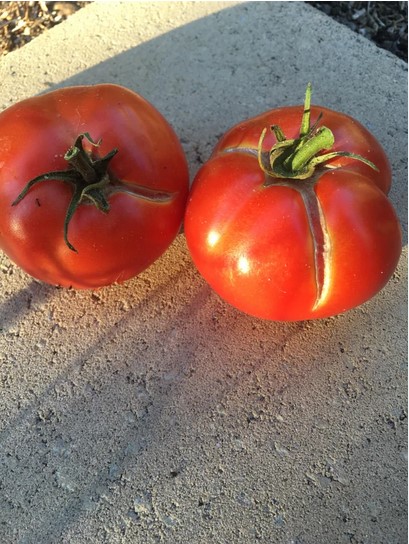
Cracked or split tomatoes lose their visual appeal to some extent but are still edible in certain cases. The skin of the fruit cracks due to an excess amount of water and absorbs the essential moisture, as a result of which the fruit swells up rapidly and expands, thereby leading to splits or cracks.
3. Wilting Leaves

Wilting of leaves is generally associated with dryness but can also occur due to overwatering because in this situation the roots fail to function properly due to the waterlogged conditions. Overwatering deprives the root of getting the desired amount of oxygen, which eventually leads to wilting.
The drooping leaves look limp and lifeless but begin to recover if watering techniques are taken into consideration.
4. Leaf Curling
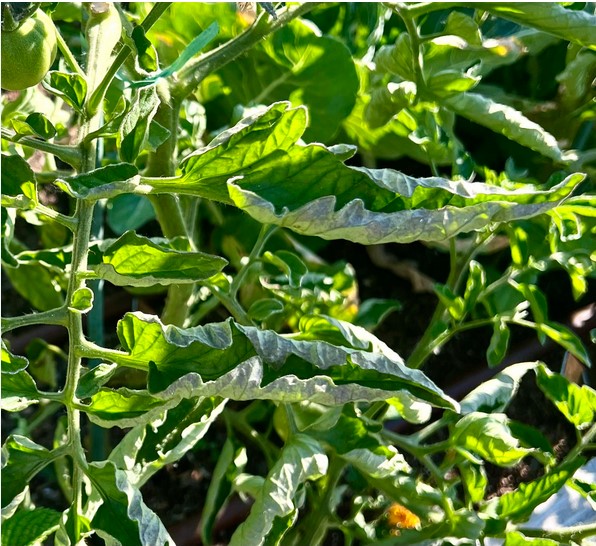
Leaf curling is a very early sign of overwatering that results in curling the leaves downward as the roots struggle to function properly due to excessive water. Turgor pressure, which keeps the leaves firm and upright, gets disrupted when the water uptake becomes imbalanced, and the whole thing leads to the drooping down of leaves.
To avoid leaf curling, stop watering immediately, check the moisture level of the soil, and ensure there is adequate drainage to avoid waterlogging.
5. Mold or Fungus Growth
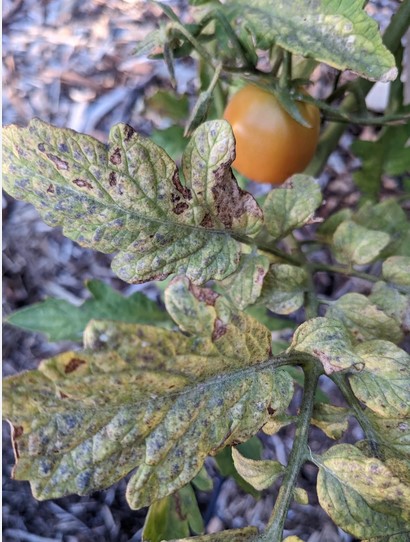
Overwatering leads to mold or fungus growth, as consistent wet conditions are ideal for mold and fungus to thrive. This mainly happens when the excess water fails to drain out and accumulates near the plants and in turn reduces the oxygen level. Fungal pathogens or mold grow on the surface of the soil due to excessive moisture.
To minimize the risk of mold and fungus growth, it is essential to manage the watering practices efficiently.
6. Waterlogged Soil
Waterlogged soil is a major sign of overwatering and impacts the plants to a great extent. The soggy or sticky soil is a result of poor drainage and is a perfect place for the anaerobic bacteria to thrive. The roots fail to take up the essential nutrients from the soil due to the waterlogging and in turn, encourage algae or moss to grow on the surface of the soil.
If the soil is waterlogged, it is advised to allow the soil to dry out naturally before you go ahead with the watering practices again.
7. Blossom End Rot
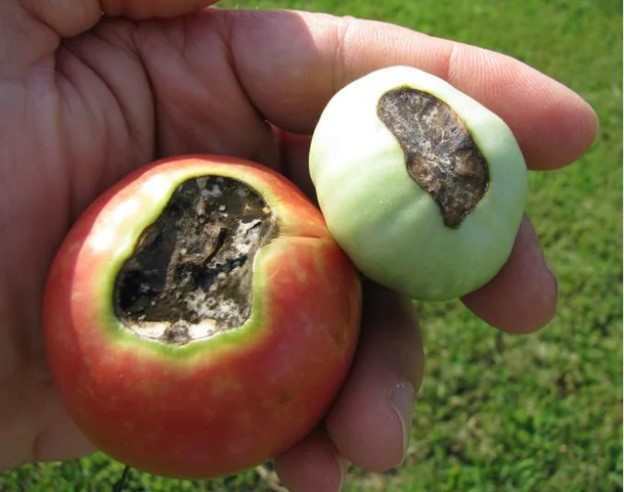
The primary cause of blossom end rot is calcium deficiency, but overwatering also plays a vital role in this case, as the plant’s ability to absorb calcium from the soil becomes difficult due to the waterlogged soil, which in turn disrupts the nutrient flow. Prolonged wet conditions contribute to blossom end rot and can be prevented by improving drainage conditions and also by maintaining consistent watering practices.
8. Yellow Foliage
Yellow foliage is a result of overwatering as the roots fail to function properly, thereby leading to nutrient deficiencies. The waterlogged soil limits the nutrient supply to the roots, which is directly responsible for the yellowing of the leaves. Generally, nitrogen deficiency and iron deficiency are associated with the yellowing of leaves, and eventually, the leaves fall off. So, address the overwatering practices and help the plants to recover.
9. Dark or Mushy Roots
Dark or mushy roots are another cause of overwatering, as excess water deprives the roots of oxygen and makes them vulnerable to decay. Also, prolonged or excess water in the soil damages the roots and their ability to anchor the soil, thereby making the plant unstable. The mushy roots appear black, brown, or dark gray and have a foul or rotting smell.
Avoid waterlogging, adjust watering practices, and improve drainage to avoid dark or mushy roots.
Best Practices To Avoid Overwatering A Tomato
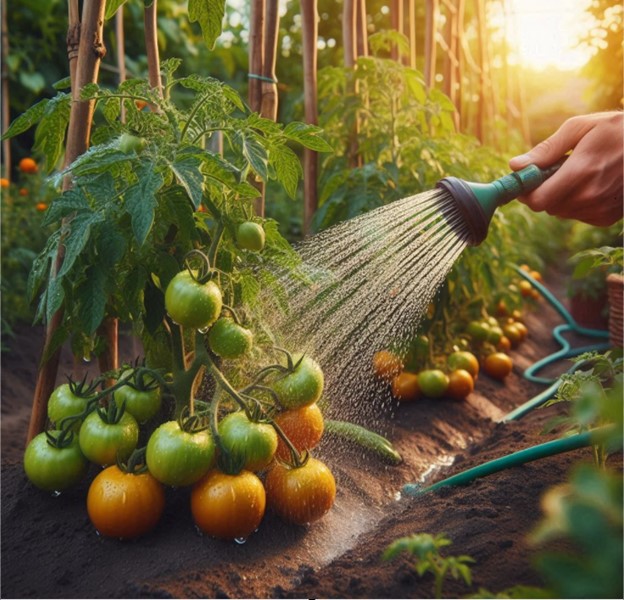
Implement these best practices to stop overwatering and also adjust the watering practices accordingly and enjoy a bountiful harvest:
- Checking the soil moisture is crucial to avoid over-watering practices
- A consistent watering schedule per week will avoid overwatering and help in adjusting the various weather conditions
- Ensure the soil is well drained to avoid waterlogging around the plants
- Monitor the weather conditions, specifically rainfall, and adjust the watering schedules accordingly
- Apply organic mulch around the base of the tomato plants to reduce the need for frequent watering
- Try planting in raised beds or containers with good drainage to prevent the accumulation of water around the roots
- Adjust the watering practices based on the growth stage
- Finally, look for signs of overwatering and adjust the watering habits accordingly
To grow bigger tomatoes in your vegetable garden, read through this guide.
Wrapping Up
Remember, mastering the art of watering your tomato plants will eventually result in delicious and juicy tomatoes.
So, implement the best practices to cultivate healthy tomato plants and keep your garden flourishing.
Leave a Reply